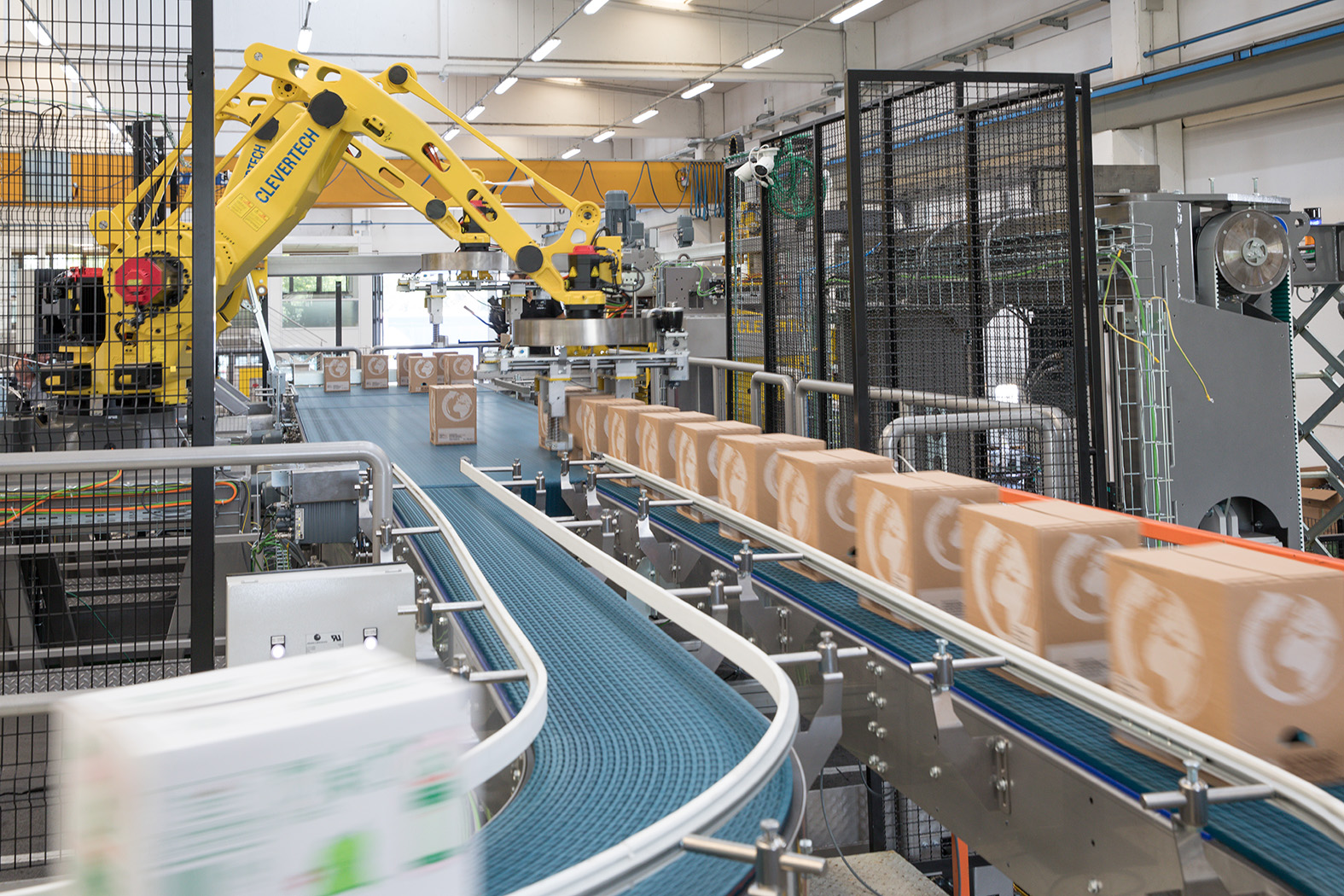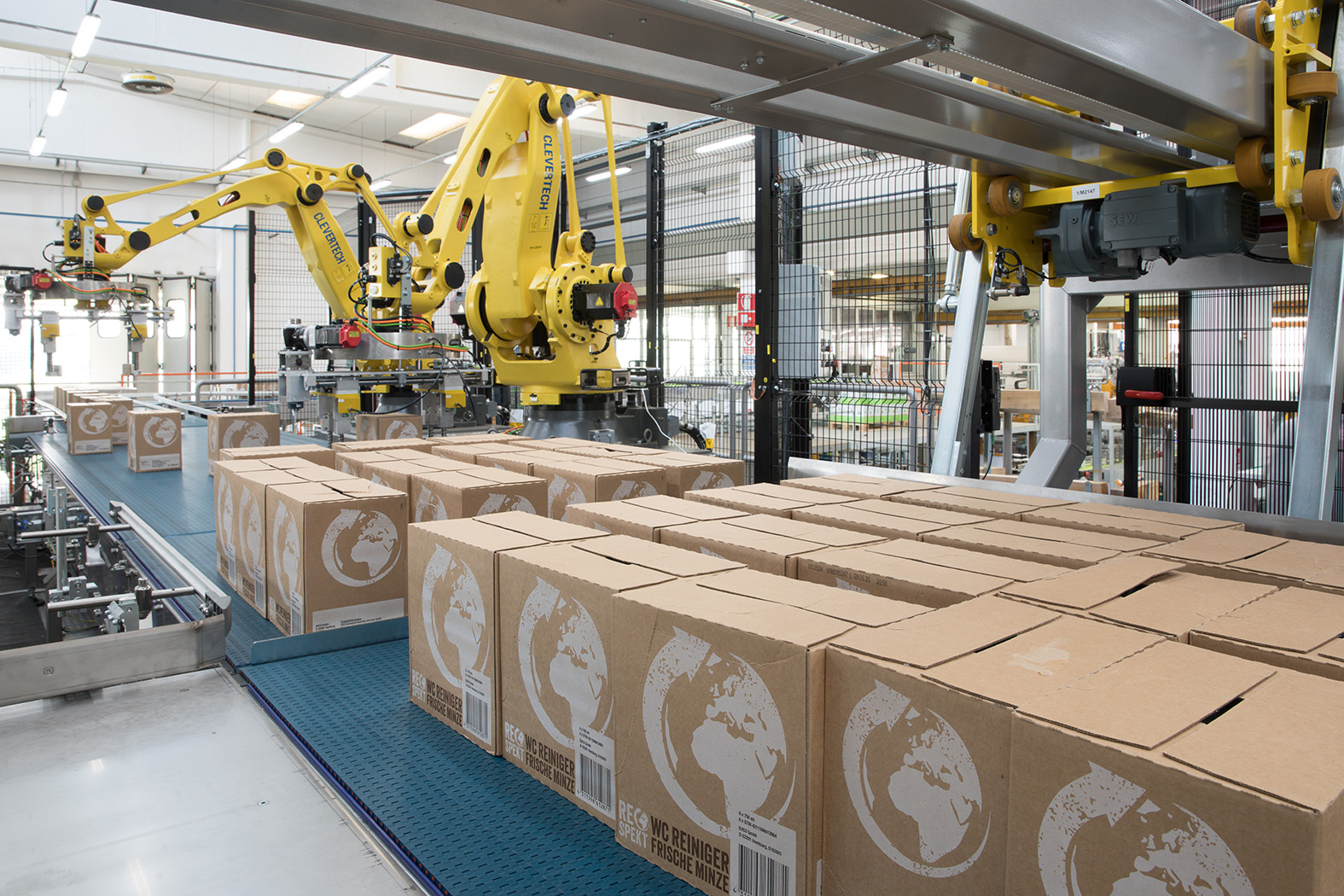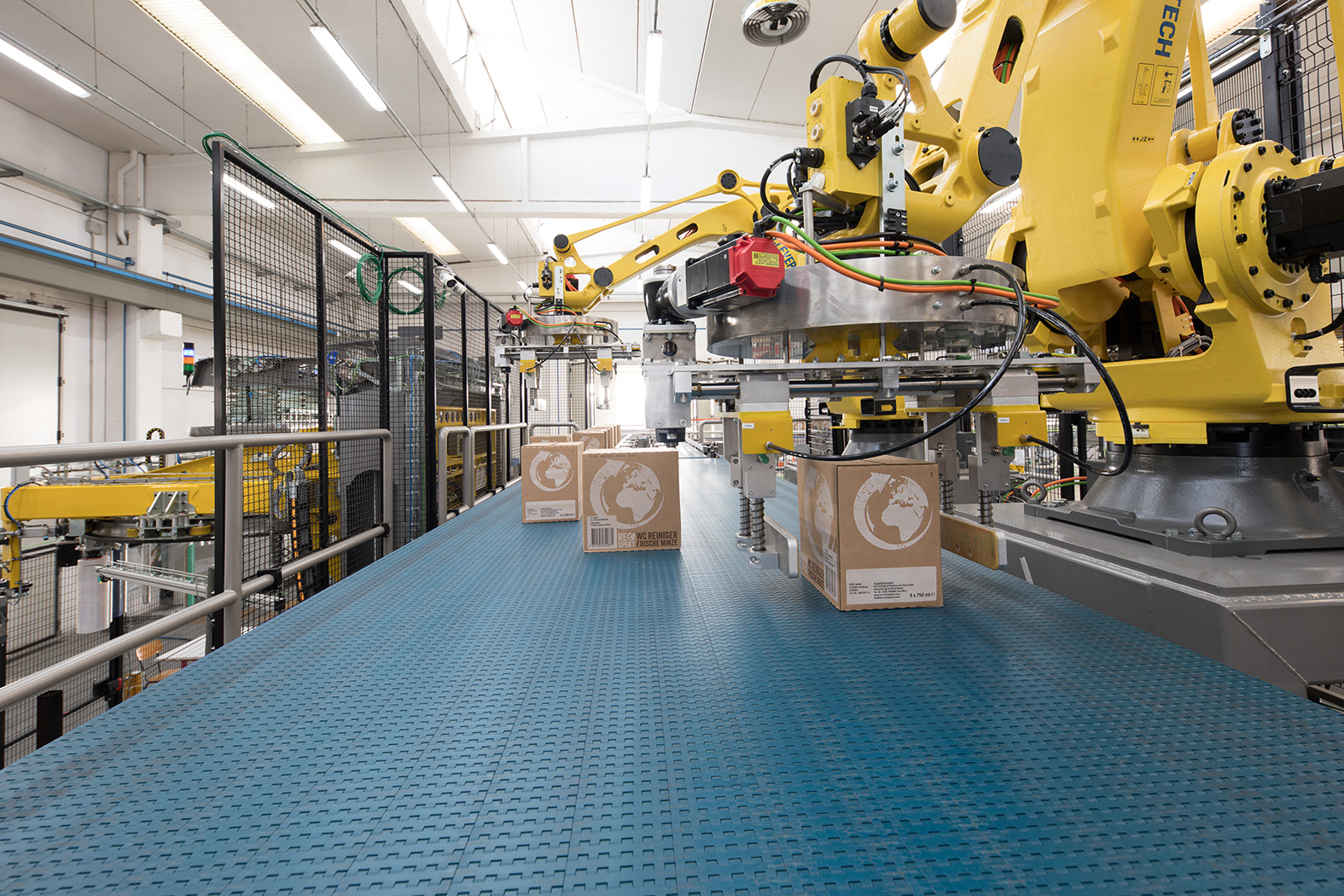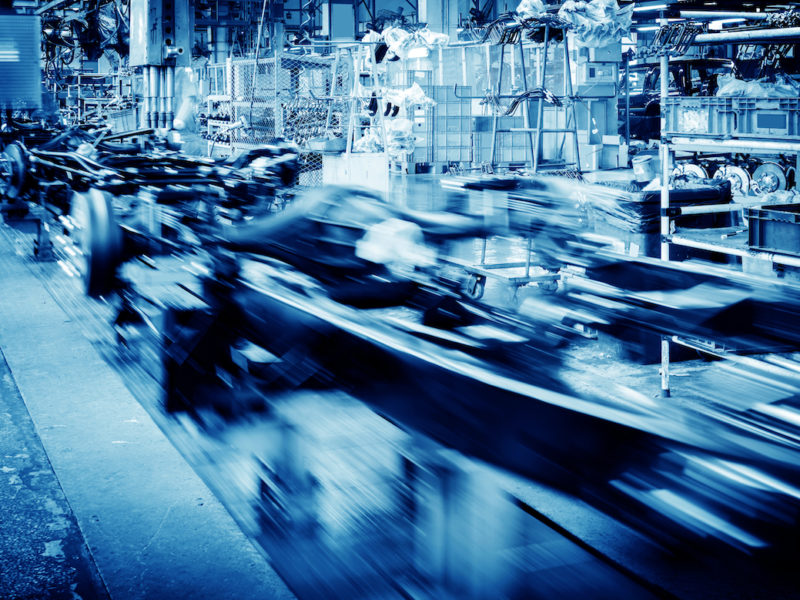
Complete eco-friendly end-of-line solution
This integrated end-of-line project was developed for a leading European manufacturer of household detergents. The customer, an historic company with more than 150 years of experience in the sector, places a particularly strong focus on protecting natural resources and creating sustainable products.
The 25th Osservatorio del mercato dei detergenti e prodotti per la casa (observatory on the household products and detergents market), run each year by Assocasa, had already highlighted the health of the sector, which recorded average growth of 0.4% in the Italian market even before lockdown. But the pandemic turbocharged sales, with turnover in the detergent sector increasing by 14.9% year-on-year between July and August 2020.
In a market which is therefore enjoying great success, Clevertech was called to design and supply an integrated end-of-line system for its customer’s German plant. The design presented problems in terms of the limited floor area available, although there was ample height at our disposal.
Different detergent formats are produced in the plant, some with a rather narrow base and thus potentially unstable.
The installed system also had to allow for the possibility to process even smaller packaging than that currently used in the plant. The need to produce smaller packaging in the future is due to changing household circumstances. Increasingly small households, often single-person, require packaging suited to their consumption.
The e-commerce market also requires packaging which is easy to handle and store, therefore preferring smaller packages. For this reason, the customer requested a flexible end-of-line solution which could adapt to sudden changes in the market, as well as being able to cope with growing markets such as the online sector.
End-of-line design during lockdown
The project was designed by a team composed of five professionals with an important contribution from Aventa, Clevertech’s partner for its activities in Germany. The most suitable type of end-of-line system was defined through a layout prior to the signing of the contract.
Development of the system’s initial layout was performed during the full lockdown phase, during which the technicians worked on data already gathered in late 2019. Once inside the plant, the initial layout was revised in order to incorporate improvements required to optimise the connections with the existing systems. The ideal solution for the customer was therefore to supply a multibrand palletiser with robotic manipulators installed on independent bases. In order to take advantage of the ample headroom, a solution with preforming at a height of 3,800 mm was chosen.
Production of the system, managed by a team of twelve, began in summer to ensure delivery to the customer in September, despite the difficulties caused by the country being in a health crisis.

Flexibility and reduction in secondary packaging
The end-of-line system has sustainability features which represent an ever-increasingly important value for all companies who wish to operate in the global market.
The machines are able to handle open trays, without film, and open-side cartons. This allows for a significant reduction in packaging, in particular the quantity of cardboard used in the secondary packaging, with a consequent reduction in the environmental impact.
The end-of-line structure has a reduced footprint: we have been able to install palletisation for fully four different production lines in the space which previously housed the end-of-line system for two production lines.

The system was installed in Germany, and serves the distribution centres for the whole of Europe. It allows handling of different sizes of packaging without the need to perform a format change. In addition to this, the positive manipulation of the cartons ensures great delicacy in their handling, avoiding any damage.
End-of-line technological advantages
Remote camera monitoring was installed on the end-of-line system, allowing the customer to view recordings and alarms and store them in the cloud. The system of eight video cameras allows Clevertech’s technicians to connect remotely and see what is happening in various points of the system.
Tracking and analysis of the gathered data is performed through the new HMI Statistics package which allows the system’s performance to be viewed with data sent via email. The advanced technology adopted allows performance not only of the complete system, but also for individual production lines, to be viewed and monitored.
Finally, the data also allow analysis of changes in performance in different time periods, corresponding to working shifts for example.
Performance
Four weeks from installation, the system had already reached 98% of its capacity.




